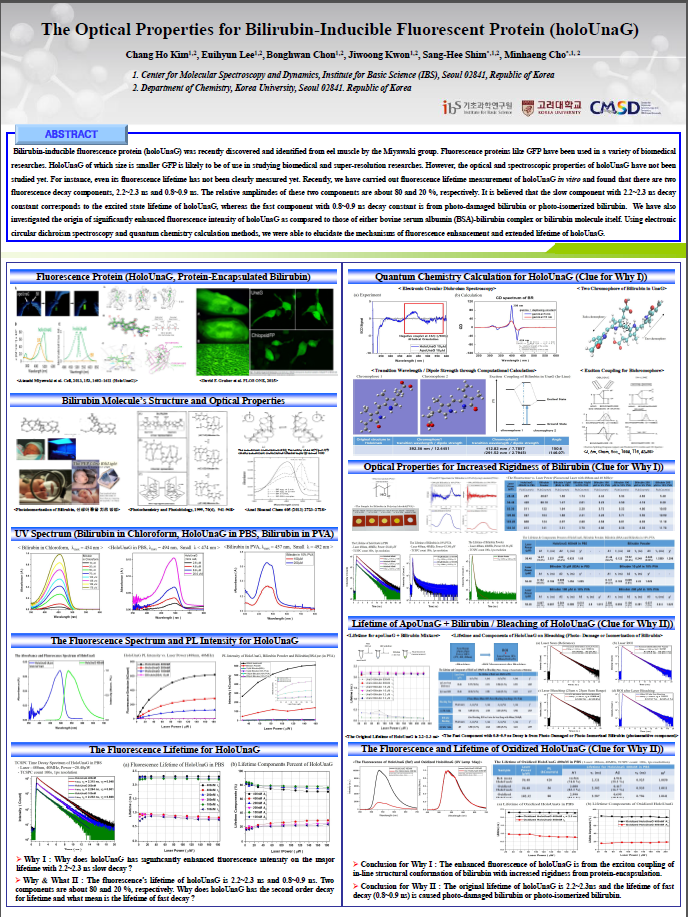mainmenu
The Optical Properties for Bilirubin-Inducible Fluorescent Protein (holoUnaG)
2017 120th KCS Meeting

Bilirubin-inducible fluorescence protein (holoUnaG) was recently discovered and identified from eel muscle by the Miyawaki group. Fluorescence proteins like GFP have been used in a variety of biomedical researches. HoloUnaG of which size is smaller GFP is likely to be of use in studying biomedical and super-resolution researches. However, the optical and spectroscopic properties of holoUnaG have not been studied yet. For instance, even its fluorescence lifetime has not been clearly measured yet. Recently, we have carried out fluorescence lifetime measurement of holoUnaG in vitro and found that there are two fluorescence decay components, 2.2~2.3 ns and 0.8~0.9 ns. The relative amplitudes of these two components are about 80 and 20 %, respectively. It is believed that the slow component with 2.2~2.3 ns decay constant corresponds to the excited state lifetime of holoUnaG, whereas the fast component with 0.8~0.9 ns decay constant is from photo-damaged bilirubin or photo-isomerized bilirubin. We have also investigated the origin of significantly enhanced fluorescence intensity of holoUnaG as compared to those of either bovine serum albumin (BSA)-bilirubin complex or bilirubin molecule itself. Using electronic circular dichroism spectroscopy and quantum chemistry calculation methods, we were able to elucidate the mechanisms of fluorescence enhancement and extended lifetime of holoUnaG.


